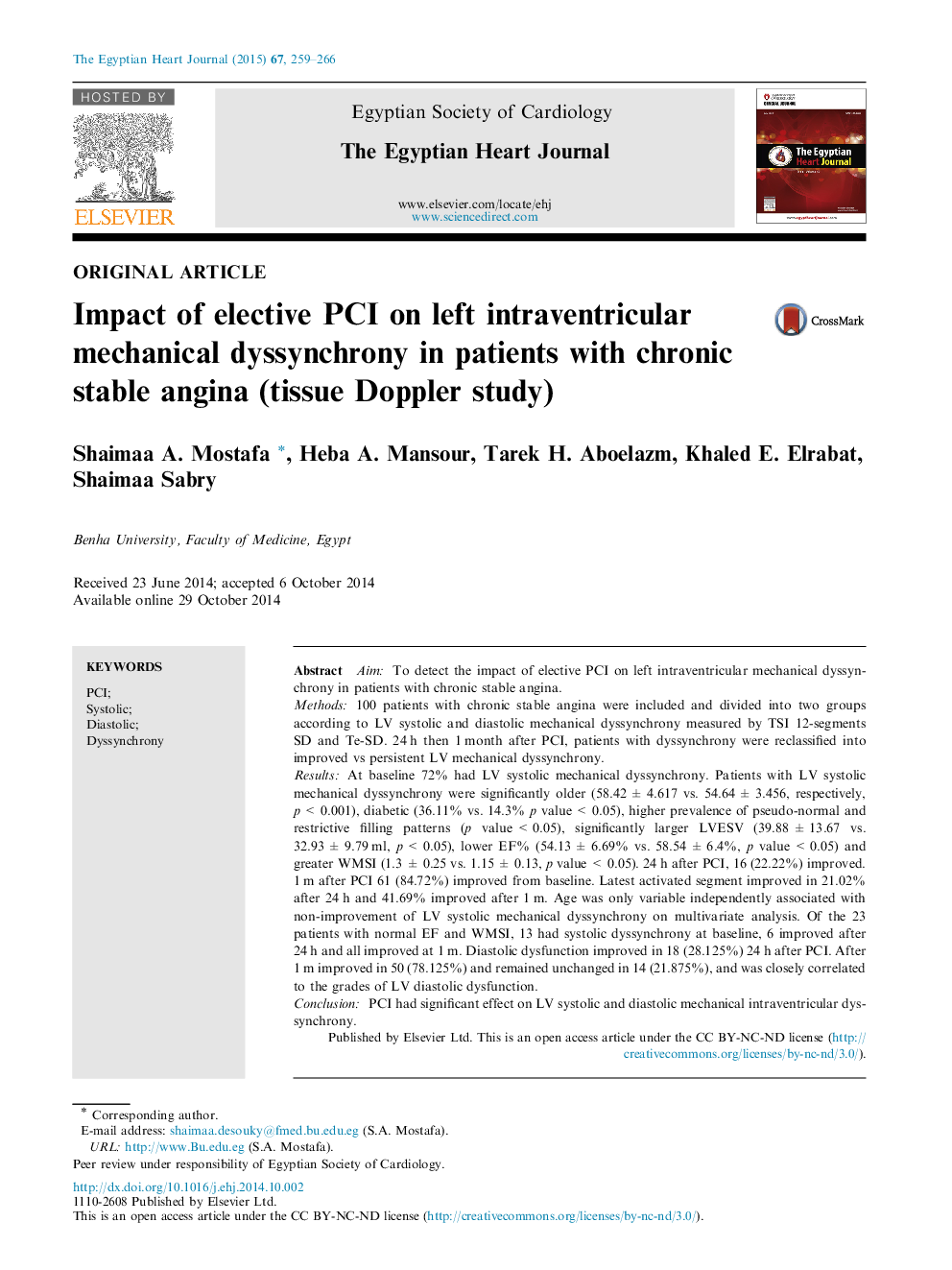| Article ID | Journal | Published Year | Pages | File Type |
|---|---|---|---|---|
| 2910583 | The Egyptian Heart Journal | 2015 | 8 Pages |
AimTo detect the impact of elective PCI on left intraventricular mechanical dyssynchrony in patients with chronic stable angina.Methods100 patients with chronic stable angina were included and divided into two groups according to LV systolic and diastolic mechanical dyssynchrony measured by TSI 12-segments SD and Te-SD. 24 h then 1 month after PCI, patients with dyssynchrony were reclassified into improved vs persistent LV mechanical dyssynchrony.ResultsAt baseline 72% had LV systolic mechanical dyssynchrony. Patients with LV systolic mechanical dyssynchrony were significantly older (58.42 ± 4.617 vs. 54.64 ± 3.456, respectively, p < 0.001), diabetic (36.11% vs. 14.3% p value < 0.05), higher prevalence of pseudo-normal and restrictive filling patterns (p value < 0.05), significantly larger LVESV (39.88 ± 13.67 vs. 32.93 ± 9.79 ml, p < 0.05), lower EF% (54.13 ± 6.69% vs. 58.54 ± 6.4%, p value < 0.05) and greater WMSI (1.3 ± 0.25 vs. 1.15 ± 0.13, p value < 0.05). 24 h after PCI, 16 (22.22%) improved. 1 m after PCI 61 (84.72%) improved from baseline. Latest activated segment improved in 21.02% after 24 h and 41.69% improved after 1 m. Age was only variable independently associated with non-improvement of LV systolic mechanical dyssynchrony on multivariate analysis. Of the 23 patients with normal EF and WMSI, 13 had systolic dyssynchrony at baseline, 6 improved after 24 h and all improved at 1 m. Diastolic dysfunction improved in 18 (28.125%) 24 h after PCI. After 1 m improved in 50 (78.125%) and remained unchanged in 14 (21.875%), and was closely correlated to the grades of LV diastolic dysfunction.ConclusionPCI had significant effect on LV systolic and diastolic mechanical intraventricular dyssynchrony.
